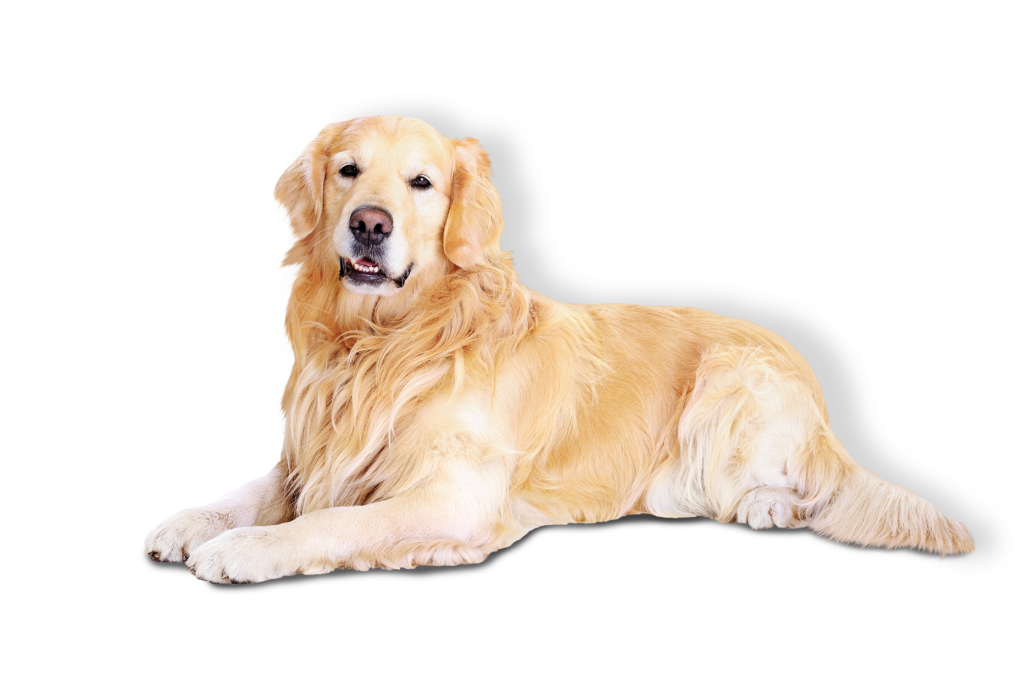VMC Cares About Senior and Geriatric Pets
The doctors and staff at VMC are committed to providing the best health care to your pet throughout their life. Our hope is to keep them healthy and pain free well into their senior and geriatric years. Older pets are a joy, and the human animal bond is cherished. Preventative wellness care is a priority at VMC. Recognizing diseases and pain states early allows us to ensure your pet receives the best possible care. Our pets do not respond to pain and discomfort like we do, so it is easy to miss the early signs of an illness or problem. By the time a dog can’t get up or a cat stops eating, it may be too late to halt or reverse the problem. Early diagnosis ensures your pet is comfortable in his/her senior and geriatric years. Early assessment with exam and lab work establishes baseline information about your pet.

Senior canine CARE FAQs
When is my pet considered a senior?
Every pet is different, but in general smaller dogs and cats tend to have longer lifespans than larger breed dogs.
Pets are considered seniors when in the last 25% of expected lifespan. Senior pets are often not distinguishable from their younger counterparts. Senior patients are great at masking underlying problems. They still want to go and do all the things they did as youngsters. This is the time we want to establish a baseline and detect early disease conditions or pain states.
Pets are considered geriatric in the last 10% of their expected lifespan. Geriatric patients generally exhibit three out of five criteria: weakness, weight loss, slowed mobility, fatigue, and reduced activity level. The normal aging process of organs has a noticeable effect on the pet, and can interfere with normal, routine activities. This is the time we want to administer supportive care and treatments, to provide a more comfortable and stable environment and to improve well-being for your pet.
The following numbers are guidelines: small breed dogs and cats are seniors at about 9-10 years, midsize dogs 8 years, giant breed dogs 6 years. For geriatric patients, small breed dogs and cats are over 13 years, midsize dogs over 11 years, and giant breeds over 9 years.
According to the American Veterinary Medical Association, “preventative care beats reactive care when it comes to senior pets.” Identifying problems early is important.
There are a variety of orthopedic, metabolic, behavioral and other problems that can arise during senior years. For senior pets, regular veterinary checkups should happen every six months–once a year just isn’t enough. Geriatric pets may need more frequent examinations. Comprehensive lab work (cbc, serum chemistry, thyroid values and urinalysis) and blood pressure testing can add additional information about your pet’s overall health.
Most important is you recognizing problems with your pet at home. Subtle changes may be happening which only you can notice- does your dog hesitate before going upstairs? This may suggest orthopedic pain. Is the ball of litter with urine scooped from the litter box larger? If so, this may suggest kidney problems in your cat. To help you recognize if your pet is having problems, refer to the canine and feline senior checklists. These are simple questions to help you assess if your pet is having any health or pain issues.
Don't older pets just slow down as they age?
Pets are just like people; aging can cause problems with normal body functions that can affect your pet’s quality of life.
Old age is not a disease!
Problems that can arise with the normal aging process include: limited mobility, sleep pattern changes, decreased vision and hearing, thermoregulation issues, and cognitive changes. This can be in addition to metabolic problems, dental disease and skin growths.
What is included in my pets senior wellness visit?
- Physical exam
- Comprehensive Annual Labwork
- Evaluation of the vaccination schedule
- Review of medications
- Body weight and body condition score evaluation
- Behavioral assessment
- Pain assessment
- Diet
Why do you recommend annual senior lab work?
- Baseline lab results are invaluable for comparison later as your pet ages.
- Certain changes, such as in weight, activity, appetite, water consumption, and urination are often attributed to aging. However, aging is not a disease. In many cases, these changes could be a sign of medical conditions that require treatment.
- Lab work allows us to find any abnormalities early on when treatment is most effective.
- If detected early, 75% of common diseases in dogs and 63% of common disease in cats can be prevented by dietary modifications alone over a one-year period.
- Kidney disease is one of the major causes of illness and death in dogs and cats, but symptoms do not usually appear until 2/3 of the kidney function has already been lost. If caught early, pets can live with this condition for many years.
what are the five general body systems we evaluate in aging pets?
• Mobility
• Behavioral/Neurological
• Metabolic/Body Function
• Skin and Coat
• Heart and Respiratory
how can i help my senior dog's Mobility?
Just like people, with age our pets’ muscles atrophy, joints stiffen, and nerve conduction decreases. When pets slow down it may be related to this normal aging process, or related to pain, like arthritis. Increased inactivity leads to more muscle loss and loss of cardiac fitness, which potentiates the struggle to get up and move.
Arthritis is a big factor in pet immobility, but don’t overlook muscle pain, tendon/ligament strain, or spine problems.
Signs your dog is struggling may be subtle. Look for decreased activity, reluctance to get up after resting, limping, a short stiff gait, an inability to get on furniture, or hesitation before going up and down stairs.
Older cats may have trouble getting onto furniture or into litter boxes. They may have a hunched posture when walking, they may stop grooming, or may cry when picked up or pet. They may be more reclusive or social when something is wrong.
What you can do to Help Your Pet’s Mobility
Change their environment. Like older people, older pets need new accommodations. This includes helping them avoid stairs or difficult terrain, using ramps or footstools to get on furniture, using heating pads and orthopedic beds, and leaving a light or soft music on. Prevent slipping on floors with throw rugs and foot pad grips.
Older cats may need lower, more open litter boxes, a soft cozy warmed bed, and easy access to food and water bowls. Litter boxes may need to be moved to a more convenient place, especially if your cat doesn’t want to climb the stairs, jump into a bathtub, etc.
Because of decreased muscle tone and arthritis, senior pets may prefer a hard surface to lay on, because getting in and out of a fluffy bed is difficult. Try to provide a firm, flat, but soft bed. Encourage daily exercise, (walking is best), to maintain muscle tone.
Senior pets who have a disability (blind, deaf, severe orthopedic disease) will need special accommodations that you should discuss with your veterinarian.
how can i help my senior dog's Behavior?
Mental health is easy to overlook, in both people and pets. It’s easy to assume the disinterest in playing or interacting is from age, when in reality many other factors may be contributing to your pet’s behavior change. Look for changes in their pattern of sleep, interest in playing, or eating habits. The confused, disoriented pet may vocalize for no apparent reason, be more clingy than normal, or exhibit anxiety.
Sleep is essential for dogs and people. Disturbance of the sleep-wake cycle occurs in older pets and often disrupts the entire family. Interrupted sleep is a common problem in older pets and may occur for many reasons, including both physical and mental causes. Waking at night may occur for reasons other than cognitive dysfunction, such as pain or discomfort.
Dogs who are feeling discomfort may pace, pant, vocalize or be restless at night, and may not show any physical limitations during the day. The effects of pain or sore muscles may be more noticeable to the dog at night.
Cats can have high blood pressure, which can present as confusion. Trouble with vision and hearing can also contribute to confusion and vocalizing.
Senility can occur, and is more common in dogs than cats. In veterinary medicine, senility is called cognitive dysfunction. A cat may pace, forget how to use the litter box, forget where the box is, or walk around disoriented. Dogs may forget how to walk through a door, not recognize people, and show general signs of confusion.
What You Can do to Help Your Pet’s Mental Health
Helping your pet sleep at night is critical. Establish a bedtime routine that may include a late trip outside for elimination, a massage and quiet time settling into a comfortable area. Most dogs prefer to be with family members but some prefer to rest alone. Quiet, soothing music may help calm pets, and a night light may help with vision problems in dark spaces. Pheromones (such as Adaptil for dogs, Feliway for cats) may ease anxiety and promote a feeling of well-being. Melatonin, when combined with a predictable nighttime routine, may help create a normal nighttime sleep cycle.
For anxiety, a ThunderShirt may help the pet feel comforted. Pheromone sprays and collars can calm anxious pets. Keep a nightlight on, and keep your senior in a safe, comfortable place. Avoid leaving your senior pet at home unattended for long periods of time. Supplements and diets are available for cognitive disorders that may ease the severity of signs.
how can i help my senior dog's body function?
Pets have changes metabolically just like people. They can have weight gain or loss, thyroid problems, and changes in appetite. Changes in thirst and urination could signify kidney problems, diabetes, or a liver disorder. Change in appetite, stools, or intermittent vomiting may be significant. Some of these changes may be part of the normal aging process, others may signify a disease process. Hiding or reclusive behavior is very common in cats with health problems or pain. Many of our pets are hardwired to hide symptoms of sickness or pain.
Don’t forget about dental disease, which is a very common problem in our aging pets, and a source of pain, inflammation and infection.
What You Can do to Help Maintain Body Function and Treat Metabolic Diseases
Older pets can have compromised immune systems and are more susceptible to parasites and infections. Perform routine lab work, including fecal and blood parasite screening. Monitor blood pressure for all cats and for dogs with other health problems. Control parasites, and keep your pet immunized if indicated. Discuss which vaccines are necessary, and consider vaccine titers.
Feed a diet specific for your pet’s needs, and pay attention to weight management: maintaining a healthy weight will help them metabolically and orthopedically. Determine with your veterinarian the best diet and supplements for your pets needs. Older cats may need a laxative or appetite stimulant.
Pay attention to dental health. Just like people, pets need their teeth cleaned. It’s important to note that dental problems do not just appear and then stop; dental disease is slowly progressive and constant. According to the American Animal Hospital Association (AAHA), dental problems can also lead to other systemic issues and diseases, such as heart and kidney infections. Make sure dental health is a part of your senior care routine.
how can i help my senior dog's skin and coat?
The health of the haircoat can tell a lot about your pet. Cats may stop grooming, which suggests they don’t feel well or are painful. Endocrine diseases can cause hair loss or changes in haircoat. Lumps and masses are abnormal and should be evaluated. Excessive licking may be related to pain or discomfort.
How You Can Maintain Healthy Skin and Coat in Your Pet
Perform routine lab work to identify endocrine problems. Identify and treat for pain if there is lack of grooming or increased licking. Manage endocrine and hormonal problems with medication. Identify and remove suspicious skin tumors. Keep your pet free of external parasites- use parasiticides monthly. Keep the hair coat clean and groomed, and keep the nails trimmed short.
how can i help my senior dog's heart?
Older pets can develop age related heart and respiratory problems. Dogs can have changes to the heart valves which can compromise cardiac function. Cats can develop hypertension which can precipitate strokes and blindness. Both dogs and cats can develop chronic bronchitis, and upper respiratory breathing issues. Changes to the rate, pattern of breathing, or abnormal respiratory noises may suggest an underlying problem.
Cardiac and Respiratory Disease Management at Home
Sudden changes can be significant. Avoid exposing your pet to extreme temperatures. Monitor the respiratory rate and pattern daily. Observe for changes in breathing sounds or exercise intolerance. These patients may need frequent veterinary care and monitoring.
Enjoy Your Special Bond
Cherish the years you have with your senior pet! Older pets are a true joy.
Continue to provide physical and mental stimulation by petting, playing, and interacting with them in your special ways. In caring for our senior and geriatric pets, we can provide a good quality of life and assist with the final stages of aging.
Links to alternative therapies and products for pets:
• Support Harness
• Protective Booties
TheraPaw.com
PawzDogBoots.com
ToeGrips.com
• Pulsed electromagnetic field (PEMF) therapy bed
• Canine wheelchairs, carts, and rear supports harnesses
EddiesWheels.com
HandicappedPets.com
Doggon.com
RuffRollin.com
• Therapeutic Laser (available at VMC)
• Home Service Senior Assessment (avaialble at VMC). Examine your pets in the home environment to identify what they may need at home to be comfortable.
• Dr. Gardner has items exclusively designed for the senior pet.



